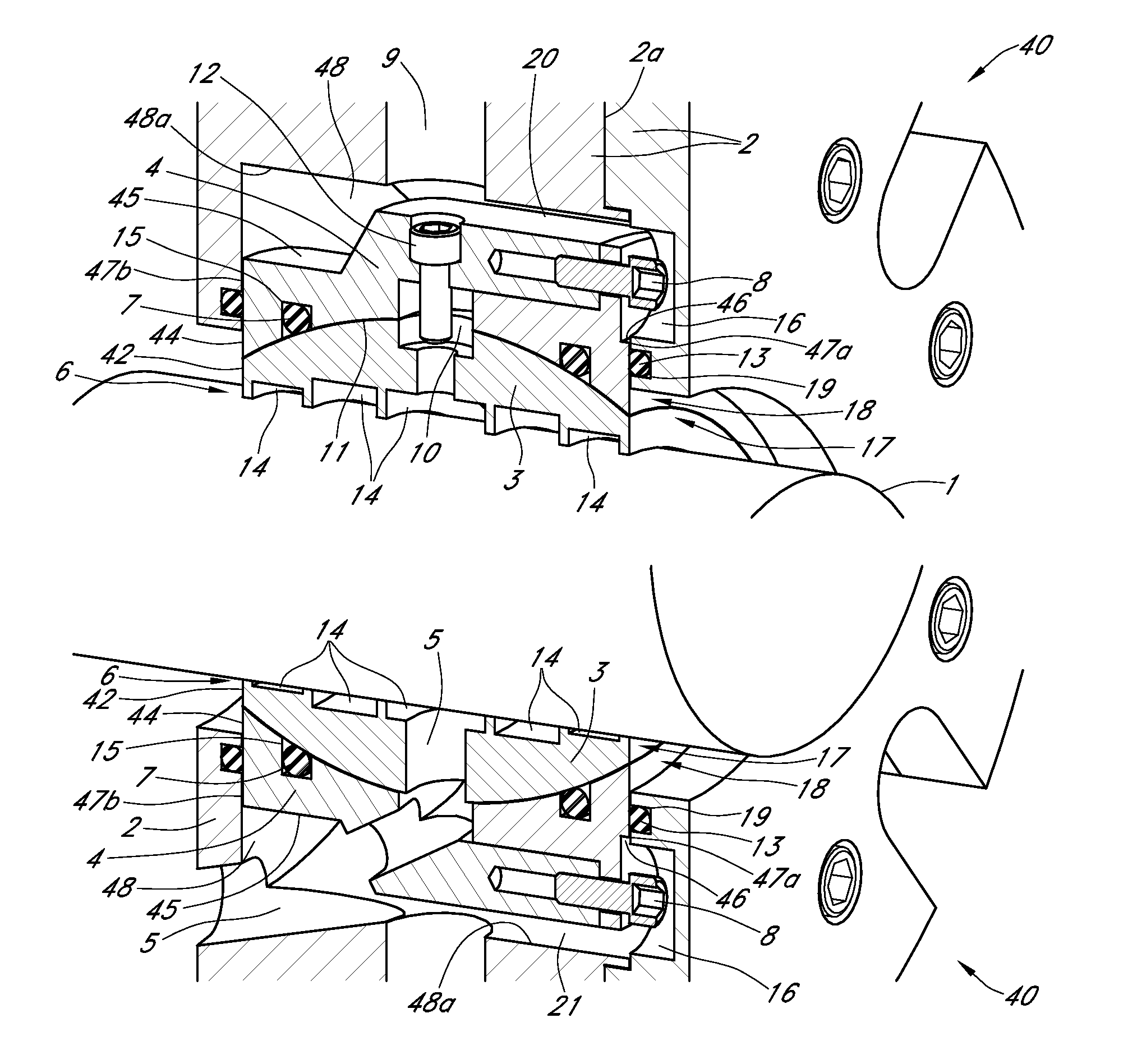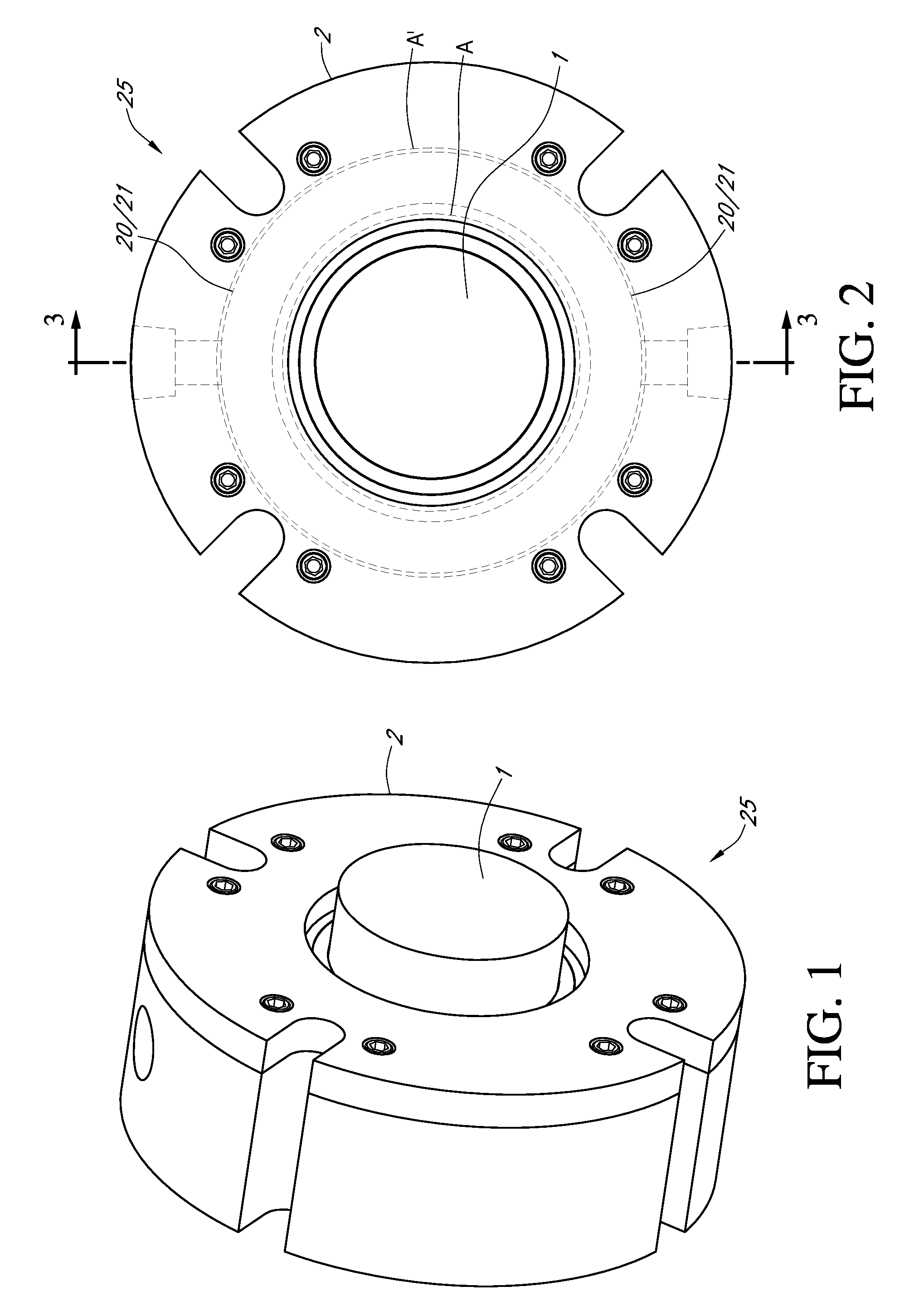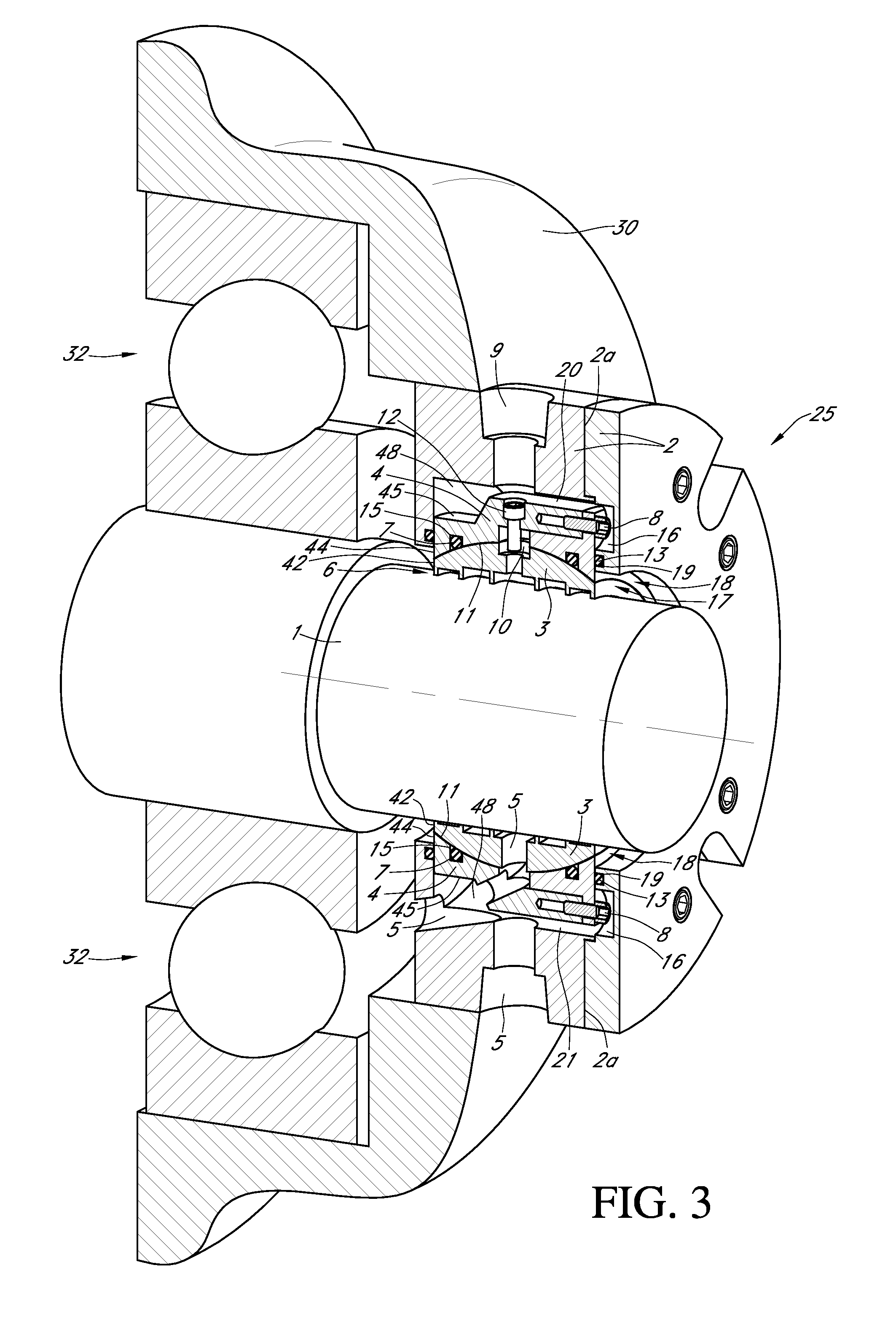Pressure balanced shaft seal assembly
a technology of pressure balanced shaft and seal assembly, which is applied in the direction of engine seals, shafts and bearings, rolling contact bearings, etc., can solve the problems of reducing or lowering the efficiency and efficacy of sealing members, failure to provide an adequate seal, and maximizing the potential for shaft to bore misalignmen
- Summary
- Abstract
- Description
- Claims
- Application Information
AI Technical Summary
Benefits of technology
Problems solved by technology
Method used
Image
Examples
first embodiment
[0039]FIGS. 1-5 provide a view of the shaft seal assembly 25 that allows for sealing various lubricating solutions within bearing housing 30. FIGS. 6 and 7 provide alternative embodiments of the shaft seal assembly 25 wherein sealing fluids are used. Applicant herein defines sealing fluids to include both liquids and vapors. Applicant considers air, nitrogen, water and steam as well as any other fluid which may work with the proposed shaft seal assembly to provide a pressurized fluid barrier for any and all embodiments disclosed herein to be within the purview of the present disclosure. The gas or fluid chosen is based on process suitability with the product to be sealed.
[0040]FIG. 1 is a perspective exterior view of the shaft seal assembly 25 arranged and engaged with a shaft 1 inserted through the fixed stator 2 of shaft seal assembly 25. FIG. 2 is an exterior end view of the shaft seal assembly with shaft 1 aligned within the shaft seal assembly 25.
[0041]FIG. 3 is a sectional vie...
second embodiment
[0055]FIG. 6 is a sectional view of the shaft seal assembly 25 as shown in FIG. 2 for over-pressurization with alternative labyrinth seal pattern grooves 14. In this figure the labyrinth seal pattern grooves 14 are composed of a friction reducing substance such as polytetrafluoroethylene (PTFE) that forms a close clearance to the shaft 1. PTFE is also sometimes referred to as Teflon® which is manufactured and marketed by Dupont. PTFE is a plastic with high chemical resistance, low and high temperature capability, resistance to weathering, low friction, electrical and thermal insulation, and “slipperiness.” The “slipperiness” of the material may also be defined as lubricous or adding a lubricous type quality to the material. Carbon or other materials may be substituted for PTFE to provide the necessary sealing qualities and lubricous qualities for labyrinth seal pattern grooves 14.
[0056]Pressurized sealing fluids are supplied to over-pressurize the lubricious labyrinth pattern 26 as ...
PUM
 Login to View More
Login to View More Abstract
Description
Claims
Application Information
 Login to View More
Login to View More - R&D
- Intellectual Property
- Life Sciences
- Materials
- Tech Scout
- Unparalleled Data Quality
- Higher Quality Content
- 60% Fewer Hallucinations
Browse by: Latest US Patents, China's latest patents, Technical Efficacy Thesaurus, Application Domain, Technology Topic, Popular Technical Reports.
© 2025 PatSnap. All rights reserved.Legal|Privacy policy|Modern Slavery Act Transparency Statement|Sitemap|About US| Contact US: help@patsnap.com



